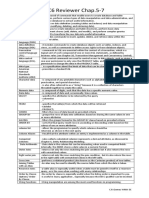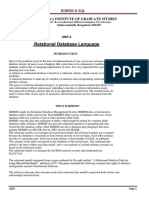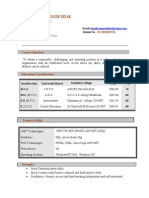0% found this document useful (0 votes)
37 views16 pagesData Analyst SQL
The document provides a comprehensive 14-day study plan for learning SQL, covering topics from basic SQL queries to advanced concepts like performance optimization and stored procedures. Each day focuses on specific SQL functionalities, including data manipulation, aggregation, joins, and data analysis techniques. Code examples are included to illustrate practical applications of the concepts discussed.
Uploaded by
mathew creationCopyright
© © All Rights Reserved
We take content rights seriously. If you suspect this is your content, claim it here.
Available Formats
Download as PDF, TXT or read online on Scribd
0% found this document useful (0 votes)
37 views16 pagesData Analyst SQL
The document provides a comprehensive 14-day study plan for learning SQL, covering topics from basic SQL queries to advanced concepts like performance optimization and stored procedures. Each day focuses on specific SQL functionalities, including data manipulation, aggregation, joins, and data analysis techniques. Code examples are included to illustrate practical applications of the concepts discussed.
Uploaded by
mathew creationCopyright
© © All Rights Reserved
We take content rights seriously. If you suspect this is your content, claim it here.
Available Formats
Download as PDF, TXT or read online on Scribd
/ 16

































































































